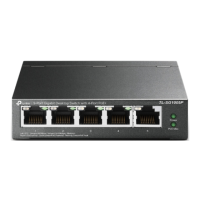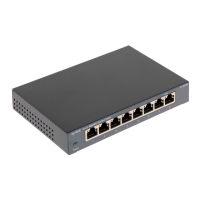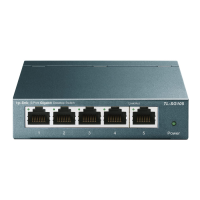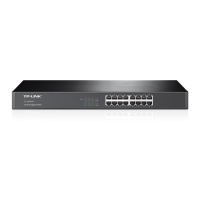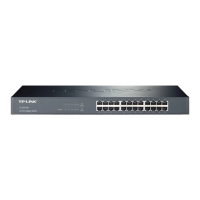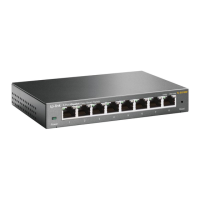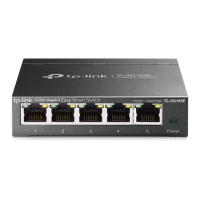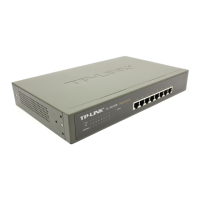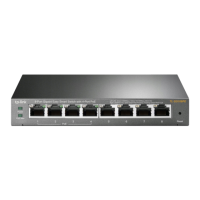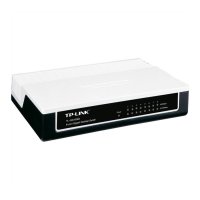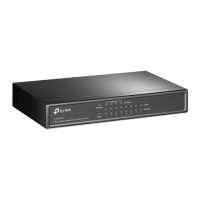Do you have a question about the TP-Link TL-SG116E and is the answer not in the manual?
Details the key features and capabilities of the Easy Smart Switch.
Step-by-step guide on how to access and log into the switch's web interface.
Steps to configure the switch's IP address using DHCP or manually.
Guide on modifying the administrator's username and password for security.
Steps to download and install the latest firmware for enhanced functionality.
Detailed steps for configuring port status, speed, duplex, and flow control.
How to view real-time statistics for each port, including traffic and errors.
Instructions for creating and managing VLANs based on individual ports.
Guide for setting up 802.1Q VLANs, including tagging and PVID settings.
Details on setting up QoS using Port Based, 802.1P Based, or DSCP Based modes.
Steps to configure system power limits and individual port PoE settings.
Details the key features and capabilities of the Easy Smart Switch.
Step-by-step guide on how to access and log into the switch's web interface.
Steps to configure the switch's IP address using DHCP or manually.
Guide on modifying the administrator's username and password for security.
Steps to download and install the latest firmware for enhanced functionality.
Detailed steps for configuring port status, speed, duplex, and flow control.
How to view real-time statistics for each port, including traffic and errors.
Instructions for creating and managing VLANs based on individual ports.
Guide for setting up 802.1Q VLANs, including tagging and PVID settings.
Details on setting up QoS using Port Based, 802.1P Based, or DSCP Based modes.
Steps to configure system power limits and individual port PoE settings.
| Switch type | Unmanaged |
|---|---|
| Switch layer | L2 |
| Web-based management | - |
| Quality of Service (QoS) support | Yes |
| Certification | FCC, CE, RoHS |
| Product color | Black |
| Rack mounting | No |
| Housing material | Metal |
| Number of VLANs | 32 |
| Networking standards | IEEE 802.1Q, IEEE 802.1p, IEEE 802.3, IEEE 802.3ab, IEEE 802.3u |
| Virtual LAN features | Tagged VLAN, Protocol-based VLAN |
| Cable types supported | Cat3, Cat4, Cat5, Cat5e, Cat6 |
| Copper ethernet cabling technology | 10BASE-T, 100BASE-TX, 1000BASE-T |
| Package depth | 412 mm |
| Package width | 170 mm |
| Package height | 70 mm |
| Package weight | 1360 g |
| Cables included | AC |
| Power source | DC |
| Input current | 1 A |
| Input voltage | 12 V |
| Power consumption (max) | 9.19 W |
| Jumbo frames | 10000 |
| Forwarding rate | 23.81 Mpps |
| Number of queues | 4 |
| MAC address table | 8000 entries |
| Packet buffer memory | 4.1 MB |
| Heat dissipation | 31.68 BTU/h |
| Storage temperature (T-T) | -40 - 70 °C |
| Operating temperature (T-T) | 0 - 40 °C |
| Storage relative humidity (H-H) | 5 - 90 % |
| Operating relative humidity (H-H) | 10 - 90 % |
| Installed SFP modules quantity | 0 |
| Gigabit Ethernet (copper) ports quantity | 16 |
| Basic switching RJ-45 Ethernet ports type | Gigabit Ethernet (10/100/1000) |
| Harmonized System (HS) code | 85176990 |
| Depth | 111.7 mm |
|---|---|
| Width | 286 mm |
| Height | 25.4 mm |
